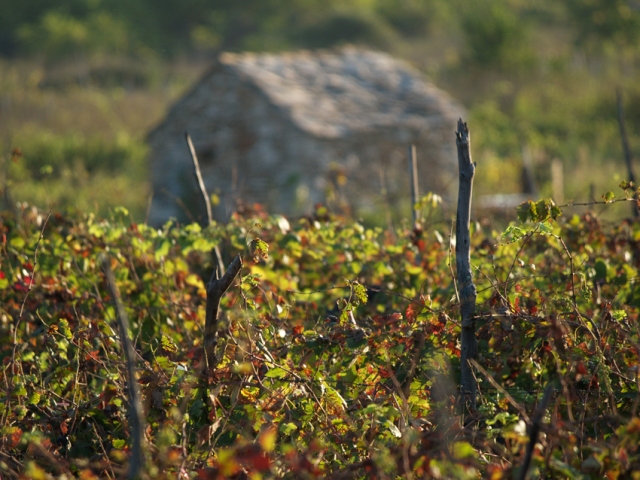What’s more Californian than a glass of spicy, jammy, rich
Zinfandel? Californians have been sipping massive Zins with typical American fares like
barbecued ribs and peppery steaks for generations. Zin was, in fact, termed “America’s
vine and wine.” As a blush wine, White Zinfandel took the market by storm in
1869, when El Pinal Winery in Lodi started the trend. And though White Zin has
become less favored recently, it still has enough intrigue to inspire veteran
cult wineries like Turley to produce it.
 |
| the best-known White Zin: Beringer |
 |
| a Crljenak vineyard in Croatia |
So how did this confusion come about, and how did the grape
get the name “Zinfandel?” Between 1820 and 1829, a horticulturist on Long
Island named George Gibbs received crates of grapes from all over Europe. One
crate was labeled tzinifándli, a Hungarian
translation of Zierfandler, a white grape from Austria’s Thermenregion. The
receiving team couldn’t quite make out the name written on the crate and
relabeled it “Zinifandel,” from which the name Zinfandel ultimately arose.
 |
| a Zinfandel grape bunch beginning to raisin |
During the Gold Rush in the 1850’s Zinfandel made it to the west coast
and was planted just north of Napa. In the hot California sun the grape ripened
to an extremely high sugar concentration, and had a tendency to raisin. In 1857
Joseph Osborne made the first Zin which received high praise and was soon
repeated by many local wineries.
After Prohibition there was quite a shortage of the grape. Its origins
were forgotten, and wineries began to confuse it with the Black Sonora grape
which was growing alongside it. Winemakers started producing insipid, uninteresting
wine with it through the mid-1900’s. But luckily more recently a new interest
in Zin has emerged and winemakers have been experimenting with this powerhouse
of a wine grape, bringing it to new heights.
 |
| Zayante vineyards in Felton, California |
But back to Croatia momentarily… Crljenak was a very popular
grape in Dalmatia until the phylloxera epidemic in the late 19th
century. One of its prodgenies, however, survived quite well and is thriving
today: Plavac Mali. Plavac is a cross between Crljenak and Dobričić,
and is one of Croatia’s largest wine exports to the US today. It produces wines
similar to California Zins: black pepper, spice, and blackberries, all wrapped
up in a rich, tannic structure, perfect for grilled meats. Plavac and its
Zinfandel counterpart are very interesting to taste together. If you’re
curious, we’ve got a comparison this month at The Barrel Room: Zayante Zinfandel versus Dingač Plavac Mali (see our list
here).
So how
Californian is Zinfandel? Though the grape made its way here from the
traditional vineyards of Dalmatia, California Zin now has a style all its own and is without question one of the all-American grapes.
- Sarah
No comments:
Post a Comment